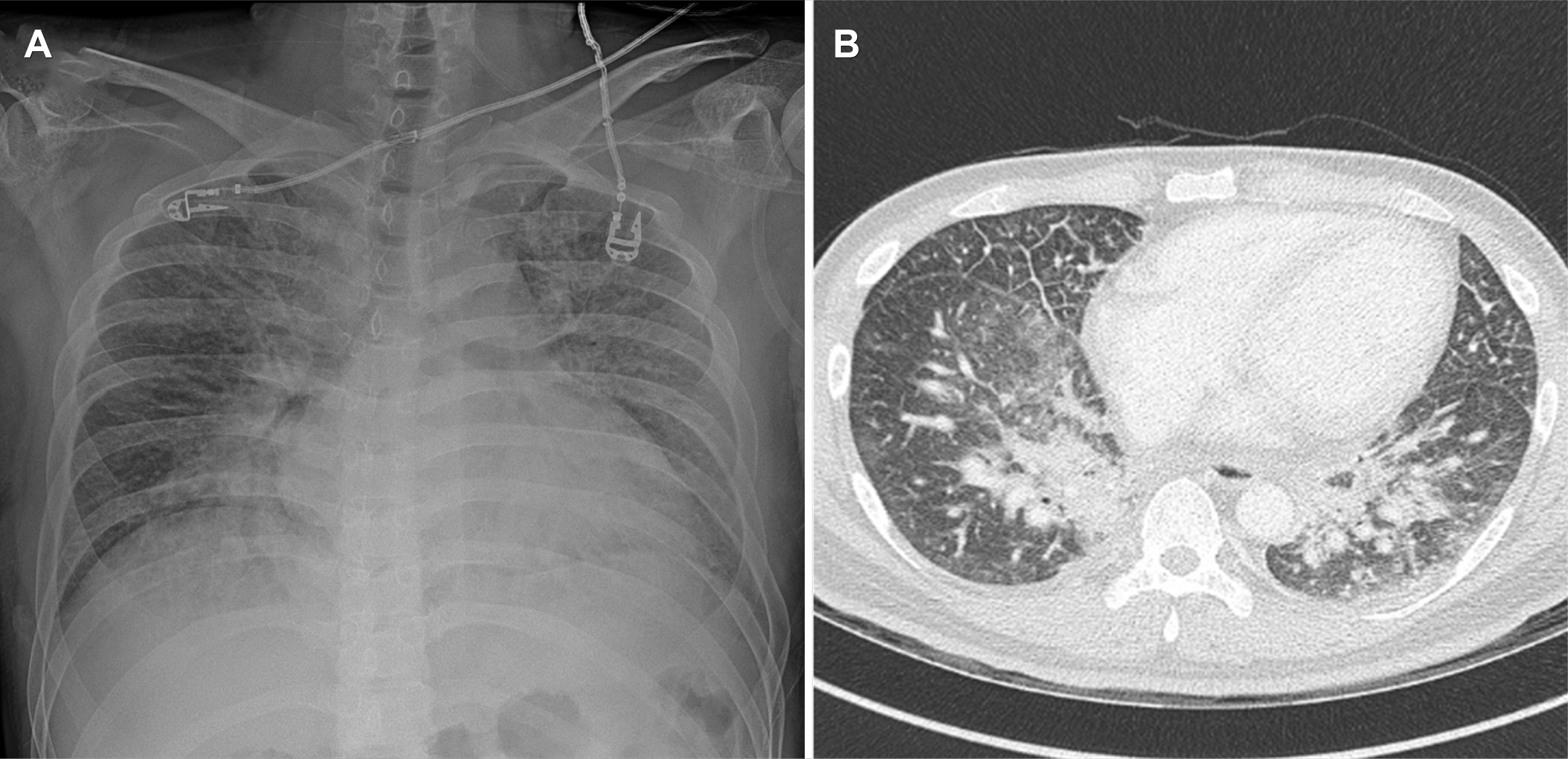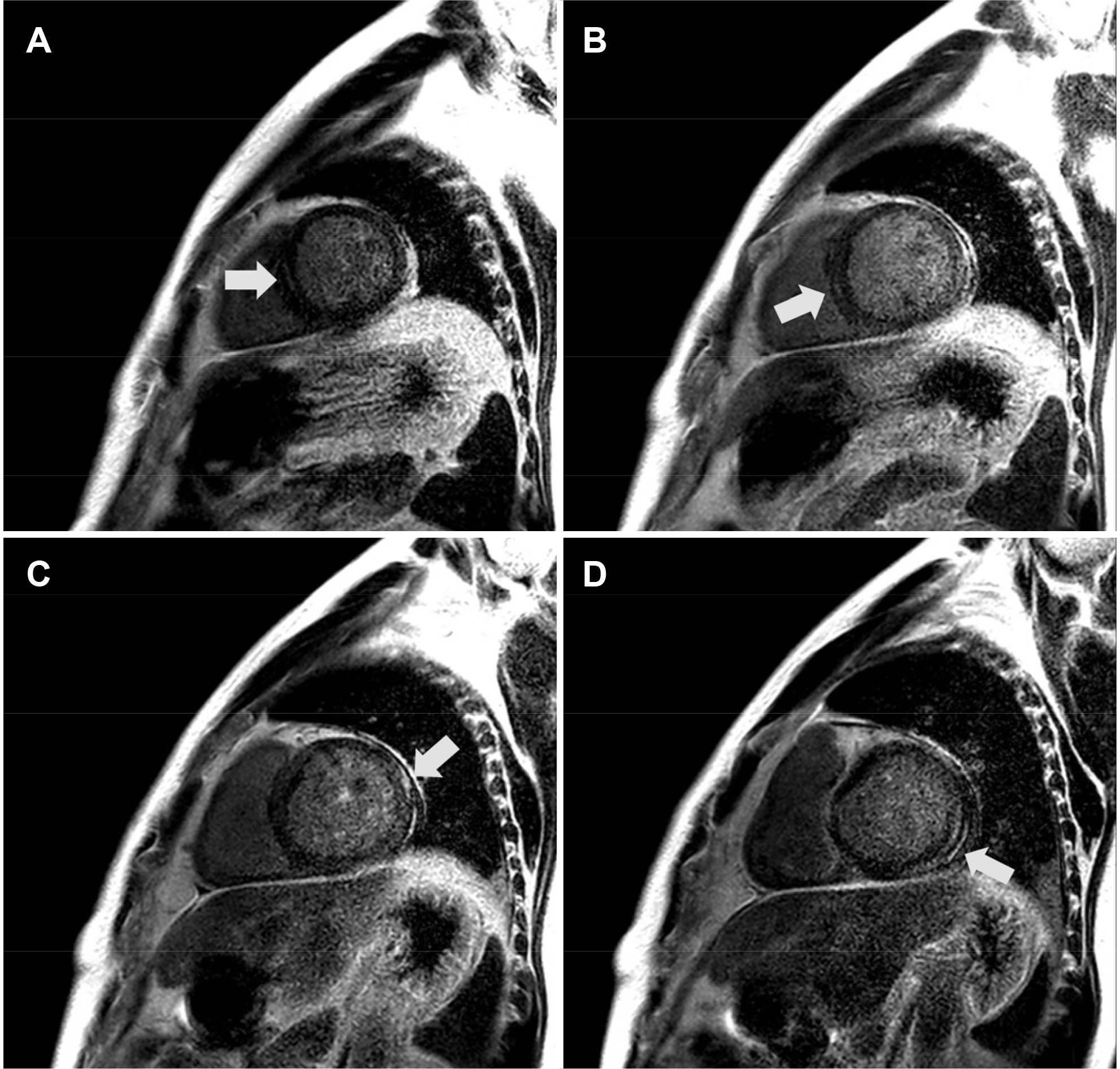Korean J Gastroenterol.
2022 Jan;79(1):31-34. 10.4166/kjg.2021.152.
5-Aminosalicylic Acid-induced Myocarditis in a Patient with Atypical Ulcerative Colitis
- Affiliations
-
- 1Department of Internal Medicine and Digestive Disease Research Institute, Wonkwang University School of Medicine, Iksan, Korea
- KMID: 2525520
- DOI: http://doi.org/10.4166/kjg.2021.152
Abstract
- 5-aminosalicylic acid (5-ASA) is used widely to treat ulcerative colitis. The common side effects of 5-ASA include nausea, vomiting, abdominal pain, headache, and skin rash. 5-ASA-induced myocarditis is a rare side effect, and few cases have been reported. 5-ASA-induced myocarditis usually occurs within 2-4 weeks of drug use and causes chest pain and dyspnea. This paper reports 5-ASA-induced myocarditis in a 31-year-old male patient who took 5-ASA for 20 days prior. The patient was hospitalized with dyspnea that worsened when lying down, with chest pain radiating to the left neck, fever, and vomiting. Myocarditis was suspected. The work-up included electrocardiogram, transthoracic echocardiogram, cardiac MRI, and laboratory investigations. The patient’s signs and symptoms improved within a few days after withdrawing 5-ASA. This case shows that an evaluation including the possibility of myocarditis should be performed when patients with ulcerative colitis receiving 5-ASA present with cardiac problems, such as dyspnea and chest pain.
Keyword
Figure
Reference
-
1. Bergman R, Parkes M. 2006; Systematic review: the use of mesalazine in inflammatory bowel disease. Aliment Pharmacol Ther. 23:841–855. DOI: 10.1111/j.1365-2036.2006.02846.x. PMID: 16573787.
Article2. Ye B, van Langenberg DR. 2015; Mesalazine preparations for the treatment of ulcerative colitis: are all created equal? World J Gastrointest Pharmacol Ther. 6:137–144. DOI: 10.4292/wjgpt.v6.i4.137. PMID: 26558148. PMCID: PMC4635154.
Article3. Sood A, Ahuja V, Midha V, et al. 2020; Colitis and Crohn's Foundation (India) consensus statements on use of 5-aminosalicylic acid in inflammatory bowel disease. Intest Res. 18:355–378. DOI: 10.5217/ir.2019.09176. PMID: 32646198. PMCID: PMC7609395.
Article4. Sehgal P, Colombel JF, Aboubakr A, Narula N. 2018; Systematic review: safety of mesalazine in ulcerative colitis. Aliment Pharmacol Ther. 47:1597–1609. DOI: 10.1111/apt.14688. PMID: 29722441.
Article5. Kaiser GC, Milov DE, Erhart NA, Bailey DJ. 1997; Massive pericardial effusion in a child following the administration of mesalamine. J Pediatr Gastroenterol Nutr. 25:435–438. DOI: 10.1097/00005176-199710000-00015. PMID: 9327378.
Article6. Brown G. 2016; 5-Aminosalicylic acid-associated myocarditis and pericarditis: a narrative review. Can J Hosp Pharm. 69:466–472. DOI: 10.4212/cjhp.v69i6.1610. PMID: 28123193. PMCID: PMC5242279.
Article7. Perrot S, Aslangul E, Szwebel T, Gadhoum H, Romnicianu S, Le Jeunne C. 2007; Sulfasalazine-induced pericarditis in a patient with ulcerative colitis without recurrence when switching to mesalazine. Int J Colorectal Dis. 22:1119–1121. DOI: 10.1007/s00384-007-0310-2. PMID: 17440739.
Article8. Park EH, Kim BJ, Huh JK, et al. 2012; Recurrent mesalazine-induced myopericarditis in a patient with ulcerative colitis. J Cardiovasc Ultrasound. 20:154–156. DOI: 10.4250/jcu.2012.20.3.154. PMID: 23185660. PMCID: PMC3498314.
Article9. Tschöpe C, Cooper LT, Torre-Amione G, Van Linthout S. 2019; Management of myocarditis-related cardiomyopathy in adults. Circ Res. 124:1568–1583. DOI: 10.1161/CIRCRESAHA.118.313578. PMID: 31120823.
Article10. Paschalis T, Paschali M, Mandal AKJ, Missouris CG. 2019; Plasma N-terminal pro-B-type natriuretic peptide (BNP) in mesalazine-induced myopericarditis. BMJ Case Rep. 12:e229142. DOI: 10.1136/bcr-2018-229142. PMID: 30975785. PMCID: PMC6506044.
Article
- Full Text Links
- Actions
-
Cited
- CITED
-
- Close
- Share
- Similar articles
-
- 5-aminosalicylic acid in the management of ulcerative colitis
- A Case of Acute Pancreatitis Caused by 5-aminosalicylic Acid Suppositories in a Patient with Ulcerative Colitis
- Perimyocarditis in a Patient with Ulcerative Colitis Treated with 5-Aminosalicylic Acid
- Acute Pancreatitis Induced by 5-Aminosalicylic Acid in a Patient with Ulcerative Colitis
- Successfully Treated Acute Fulminant Myocarditis Induced by Ulcerative Colitis with Extracorporeal Life Support and Infliximab




